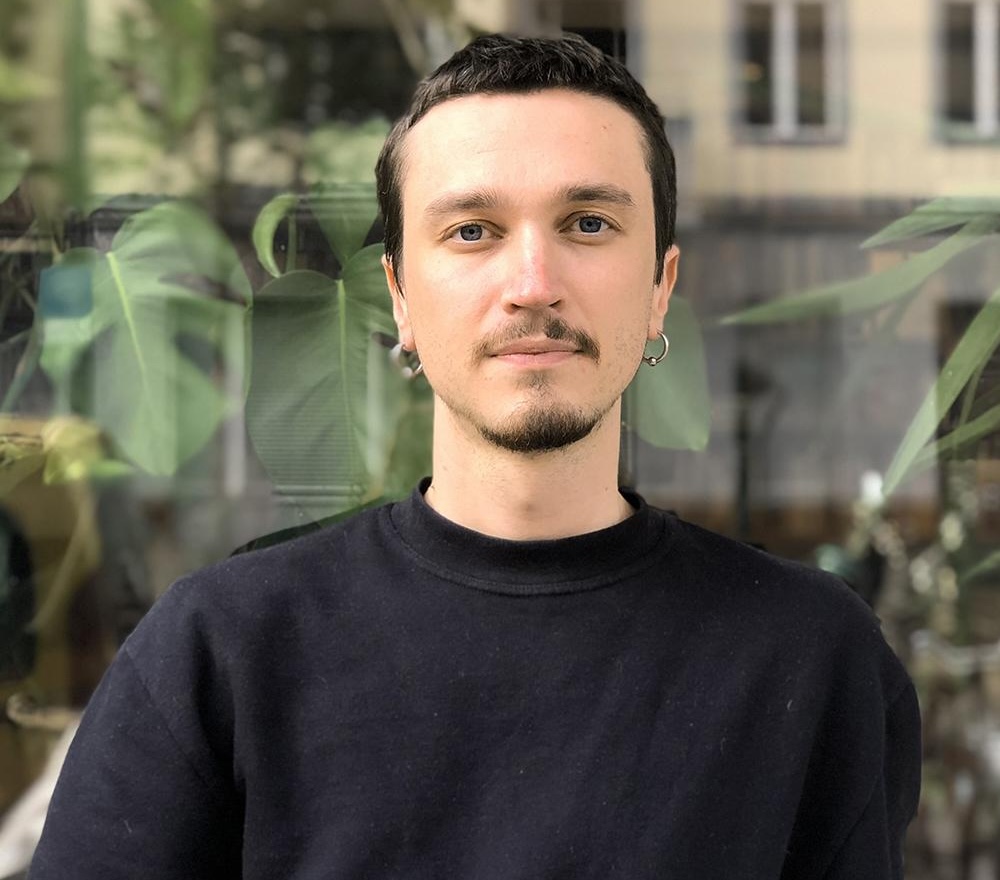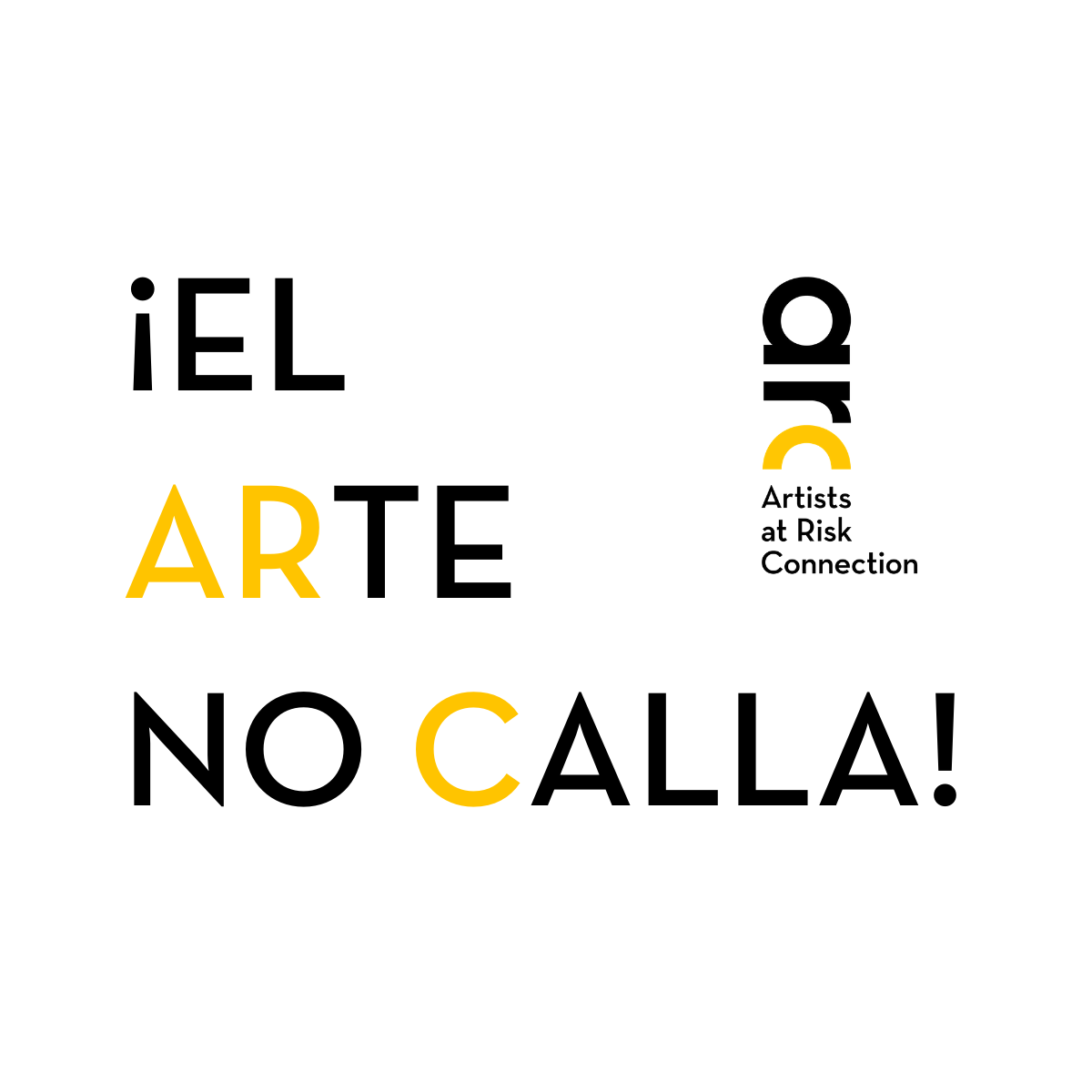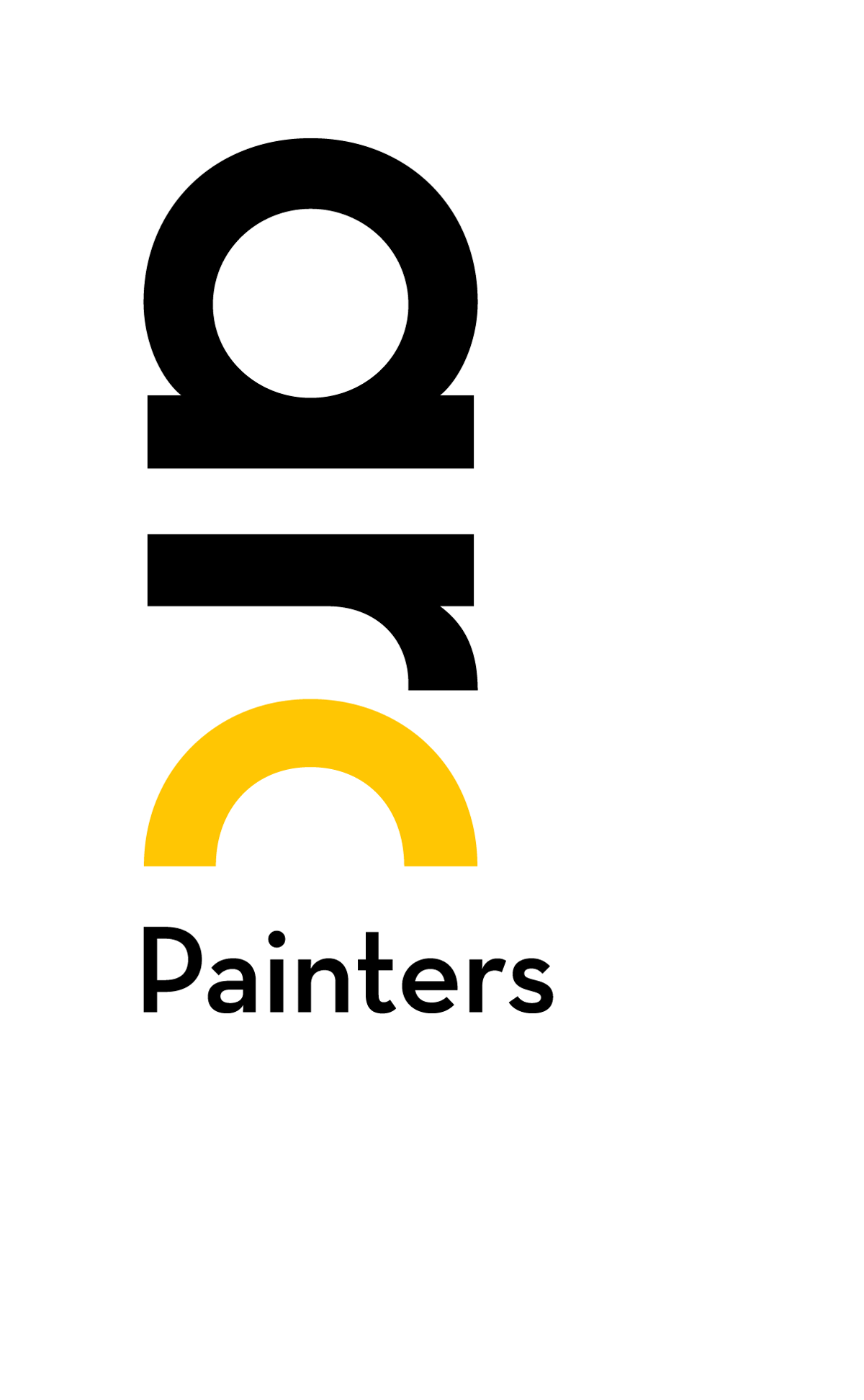Uladzimir Hramovich
Multidisciplinary
Belarus

Born in 1989 in Belarus, Uladzimir Hramovich currently lives and works in Berlin, Germany. He graduated from the Gymnasium-College of Arts named I. O. Akhremchik in Minsk in 2009 and completed his studies in the graphics arts department at the Belarusian State Academy of Arts in Minsk in 2015. Since 2016, he has been a member of the Problem Collective.
Hramovich’s artistic practice encompasses installations, graphics, and video. He views materials such as concrete, granite, metal, paper, and paint not just as surfaces for historical imprints, but as agents that can deform history itself. His work draws upon the history of modernist art and architecture, as well as the ideological narratives and political movements that have shaped urban space in Minsk. He is particularly interested in the tension between the past and the present, exploring monuments and rituals of memory laden with ideological meanings and residing in material form.
An active participant in the 2020 protests in Belarus, Hramovich left the country following his detention. He is now a participant in exhibitions in Minsk, Poland, and other venues across Europe.
He has exhibited at «Ў» Gallery of Contemporary Art in Minsk and the 5th Odessa Biennial, among other venues.
“I want future artists to know how the Belarusian tradition in art has developed; it’s very frightening that nothing will remain.”
– Uladzimir Hramovich
ARC Interview with Uladzimir Hramovich
For a Belarusian artist, giving an interview is also not an easy choice. Why do you do it and speak openly?
I give interviews because I understand that I must speak and that I have the opportunity to do so. My wife and I left Belarus four years ago and have never returned for safety reasons. In 2021, my neighbors, who lived in the same building as us, and I planned to take a group photo. We had a chat where many people from our apartment building were coming together. In this chat, we agreed to gather and take the photo. A minibus—without license plates or any identifying marks—passed by, stopped, and took my wife and me away to the infamous Okrestino detention center.
I spent 15 days there. There were 15 of us in a four-person cell. We were threatened with beatings and torture. During this time, the police came to my home. There was a fear that I would be arrested for a longer term because we participated in all the protests. We thought I would get additional time and wouldn’t be released. Immediately after that, I left for Ukraine, where the exhibition “Every Day” was taking place at that time. That was the very exhibition that ended up being the last for Ales Pushkin. Ukrainian Minister of Culture Dmytro Kuleba visited the exhibition, understanding that it was dangerous for protest artists to return to Belarus and offered support in Ukraine. But Ales said he would definitely come back. He returned, was arrested, and died in prison.
After that exhibition, my wife and I received a residency in Białystok, then in Brno. Then happened the Protasevich case, and in the summer, the crackdown on the NGO sector took place, with many friends and acquaintances being imprisoned. In short, we have never been home again.
To what extent, and in what way, does being from Belarus, a country with an authoritarian regime that is called a co-aggressor in the war with Ukraine, define you as an artist?
I am still changing; there is an internal evolution process ongoing. Forced emigration is a heavy burden. It changes me significantly, just like the war in Ukraine, which became a second blow. Before that, we could talk about Belarusian independence and our political problems; these issues were understood. After the full-scale invasion began, the concept of “co-aggressor” emerged. Unfortunately, in the world, in Europe, there was no understanding that Belarus was one of the first countries to face Russian imperial resentment. Belarus was the first victim of political revisionism. Lukashenko exploited this resentment well, creating an image of Belarus as Russia’s younger brother in exchange for Putin’s support.
Right now, it feels as if we are living in the 1920s and 30s, with many parallels. The migration of Belarusians to France and Argentina, the flight from the pogroms against the Jewish population, I keep returning to these things constantly. Many emigrated back in the 90s, already understanding that the regime was strengthening.
Belarus seems to be simultaneously responding to questions about its future and its past—there is a question of the existence of identity. Ukraine must physically survive, endure; the same question stands before Belarus, but in a long-term perspective.
It is important to understand that the protests of 2020 had a horizontal format. There were no leaders; they were imprisoned. People united independently in networks; during Lukashenko’s regime, a horizontal structure of society and civil society was built. The function of culture was taken on by civil society. Everything in culture was done through NGOs. In contrast to Russia, we didn’t have state art institutions, significant funding for contemporary art, or a functioning art market. Culture and art were in the hands of the community, leaving the regime with nothing to use against us.
I had a work titled “People of Salt,” which I recently exhibited at the Biennale in Prague. It’s a metaphor for the history of Belarus. It refers to potash salt, the only natural mineral that Belarus extracts. It’s rare and important for fertilizing the land. Lukashenko trades it and receives currency for it. This salt is a metaphor for our value and our dispersion. After each wave of repression, we scatter across various countries in the world.
Another one of my works, a performance, is dedicated to Abram Brazer—a Belarusian artist. He was one of those who built the new Belarusian visuality after the revolution. He created many works, and he had a solo exhibition just before WWII. Abram Brazer was Jewish; he could not evacuate, all his works were destroyed, and he and his family were shot in 1942 in the Minsk ghetto. I presented a video performance about him; in this way, I try to speak on behalf of artists like him.
I try to ensure that there are no gaps in our history, so that young people can see how the Belarusian tradition and art have developed. It’s very frightening when nothing remains.
How would you describe your experience of living and working in exile? What is the most challenging part? What helps you remain yourself? As an artist?
I must say that the last year differs significantly from what it was before. Over the past year, I have emerged from depression, received a residence permit—these are very important things that stabilize life. I lived in Belarus until I was 31, in a very special art environment. I used to be happy if I managed to participate in one exhibition a year. Now, in a year, I have had more exhibitions than in my entire previous life. I would describe it this way: everything depends on how much effort you put in and the support of colleagues and friends. For an artist in exile, it’s vital to expend a lot of effort, but without support, it won’t work.
I don’t excel at anything else. Art is the only thing I can do, and the stories from Belarus are the only things that truly matter for me to tell. As long as they remain untold, I feel like I have not voiced what I need to say.
How do you document or reflect on current events in Belarus in your works?
I think of the contemporary political history of Belarus as a collective experience, which will become a common national foundation. Just today, I saw that human rights defenders named new political prisoners; now there are more than 1,000 in Belarus. Several tens of thousands were detained as a result of protests or later. I have always participated in the political life of Belarus since 2006, but only after I spent 15 days in Okrestino prison did I understand what Belarus would look like after the repressions. What people will inhabit it, what values will unite us. Political persecution has affected everyone. Before, the only ones targeted were activists. Now it’s workers, retirees—you can speak the same language with them. Our land is united by the experience of this violence; that’s what brings us closer together.
The experience of political repression will forever be a common background for Belarus. This experience of imprisonment, of persecution—I think this shared experience that people have will become the weapon that will ultimately destroy Lukashenko’s regime.
What do you see as the main tasks of protest art in the modern world? How does your work align with these tasks?
When war begins or protests erupt—I wouldn’t say it inspires art; there’s too much stress and anger. Art is the only way to notice the unnoticed, to reveal the undisclosed; it is the only tool you have to do something, to fix something.
What are your hopes?
I don’t have big hopes; my last thoughts are that as long as I have the strength and the means, while I can move, while I can be heard, it’s crucial for me to continue telling the stories about Belarus. To ensure that this narrative does not break, that it continues, and that there is no rupture between different parts of the story. The feeling that you are doing something entirely alone, without anyone backing you, is very depressing. This is what I do; it supports me, and this is what I hope for. Perhaps someday in the future, someone will stand on my shoulders as a step. As the Belarusian writer Vladimir Korotkevich said, “The next generation will be happier at the height of our graves.”






